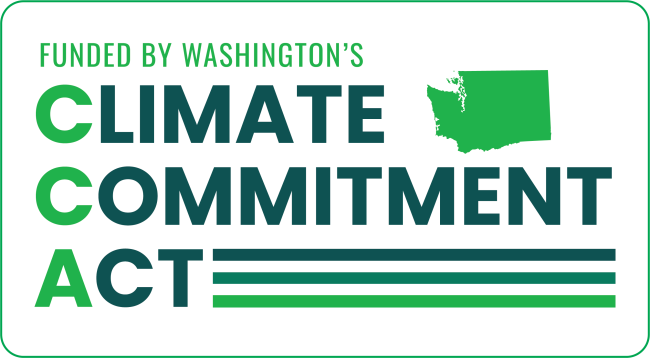Move Ahead Washington public transportation grant programs
Find information on Move Ahead Washington, the new state transportation funding package that provides $3 billion for public transportation over the next 16 years. Move Ahead Washington funding will add support to existing programs and lead to the development of new programs.
These grants are supported by state funding from Washington’s Climate Commitment Act (CCA). The CCA supports Washington’s climate action efforts by putting cap-and-invest dollars to work reducing climate pollution, creating jobs, and improving public health. Information about the CCA is available at www.climate.wa.gov.

For the 2023-25 biennium, the Legislature appropriated $406 million under the Climate Transit Programs Account. This is in addition to the funds provided under the Multimodal, Rural and Regional Mobility accounts.
The table below was last updated on Feb. 2, 2024. We are currently in the process of updating the table. The table includes grant programs that received funding under the Climate Transit Programs Account.
| Grant program | Eligible entities | 2023-25 funded | 2023-25 spent | 2022-25 total funded | 2022-25 total spent to date |
|---|---|---|---|---|---|
| Special Needs Grant Program funding for nonprofits | Nonprofit providers of special needs transportation | $17,963,000 | $3,037,796 | $21,211,000 | $5,899,391 |
| Special Needs Grant Program funding for transit agencies | Transit agencies* | $60,137,000 | $2,956,059 | $71,009,000 | $13,159,255 |
| Transit Support Grant Program | Transit agencies* | $188,900,000 | $12,636,488 | $222,506,000 | $46,201,731 |
| Green Transportation Capital Grant Program funding | Transit agencies* | $39,400,000 | $365 | $44,110,000 | $1,759,632 |
| Transit Coordination Grant Program | Transit agencies in the central Puget Sound region† | $2,000,000 | $0 | $3,000,000 | $956,143 |
| State Buses and Bus Facilities Grant Program | Transit agencies* | $38,000,000 | $50,165 | $38,000,000 | $50,165 |
| Tribal Transit Mobility Grant Program | Tribal nations in Washington | $10,000,000 | $454,211 | $10,000,000 | $454,211 |
| MAW tier projects | Transit agencies, regional transit authorities, cities , and counties | $46,587,000 | $0 | $46,587,000 | $0 |
| CTR/TDM | Cities, counties, and regional organizations | $3,300,000 | $157,000 | $3,300,000 | $157,000 |
*City transit systems under RCW 35.58.2721 or chapter 35.95A RCW, county public transportation authorities under chapter 36.57 RCW, metropolitan municipal corporation transit systems under chapter 36.56 RCW, public transportation benefit areas under chapter 36.57A RCW, unincorporated transportation benefit areas under RCW 36.57.100, or any special purpose districts formed to operate a public transportation system.
†Transit agencies located in a county or counties with a population of 700,000 or more that border Puget Sound.
Sign up for grant updates
To stay informed about WSDOT public transportation grants, you can register in GovDelivery.
Slow down on ice and snow.
It's easier to skid or lose control traveling at higher speeds. Give yourself more time to stop.
Carry chains, practice installing them.
Winter conditions could mean chains are required on your route. Practice putting them on your vehicle ahead of time.
Pack your winter car kit.
Carry extra supplies like warm clothing, ice scraper and brush, jumper cables and other emergency items.
